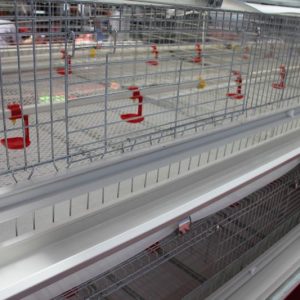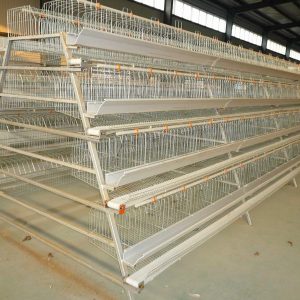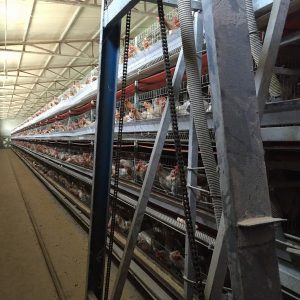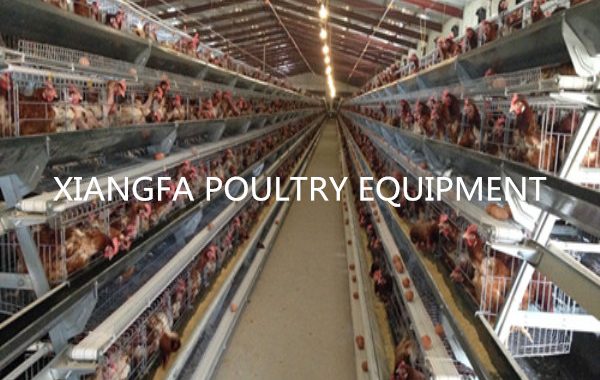
cage system of poultry farming
cage system of poultry farming , reeding chickens is a delicate job, especially broilers, and they need to be slaughtered in just a few dozen days. Therefore, no errors are allowed during the whole breeding process. Even if there is a mistake in feeding management, it will have an impact on the final production performance, such as increased feed ratio, underweight, increased death rate, uncontrollable disease, and even forced to be slaughtered in advance. Affect the economic benefits.
Therefore, we must constantly sum up experience and learn lessons during the breeding process. In actual operation, we should be as reasonable as possible, accurate and accurate, and reduce the breeding risk to a low level.
1. Poor temperature control
There are two cases of poor temperature control. One is that the temperature is low, and the other is that the temperature is high.
In general, low temperature is relatively rare, and most cases are high temperature. Many people think that higher temperature chickens are easier to raise, so the temperature in the brooding room is raised to 35 ° C ~ 36 ° C or even higher before entering the chicken every time. In fact, such a high temperature is not needed. The chicks have been transported for a long distance, and some of them have shown slight dehydration symptoms. After entering the brooding room, they need some time to adapt. If they encounter high temperatures as soon as they enter the brooding room, this is For the group, it is a strong stress, which can easily cause dehydration of some chicks. Therefore, it is recommended that before the chicks enter the brooding room, the temperature of the brooding room is controlled at about 30 ° C. After the flocks have all entered the house, the temperature is gradually increased until the flocks are completely dispersed and adapted to the temperature of the brooding room. The temperature is then kept constant at this level.
Of course, the low temperature in the brooding room is also not allowed, which will cause serious chick omphalitis, white dysentery, and poor or no absorption of yolk. In short, the brooding stage is very important. Poor management will affect the life-long growth of the chicken.
2. Irrational ventilation
The common manifestations of unreasonable ventilation include two types of fearless ventilation and chaotic ventilation. The most common thing is that the farm does not dare to ventilate. Especially in the early stage of the breeding cycle, many people think that the chicken is young and afraid to catch cold and dare not ventilate. Or think that the environment in the chick house is acceptable, without ventilation. But this will lay hidden dangers for the later ventilation work. I didn’t dare to ventilate in the early stage. If the chickens reach more than 20 days of age and feel that the air quality in the house is poor or need to reduce the indoor temperature for ventilation, if the amount of ventilation is too large, the chickens will show discomfort and severe colds will occur. The phenomenon. If the amount of ventilation is too small and the effect of improving air quality is not achieved, the chickens will still have respiratory problems.
The author here suggests that (especially closed houses) chicks should be slowly ventilated on the first day (no later than 4 days) when entering the brooding room. The purpose of ventilation is to keep the air fresh and sufficient oxygen in the house. Be sure to allow the flock to adapt to the ventilation as early as possible while maintaining the appropriate temperature of the flock. In this way, when more than 20 days of age are needed, the flock can adapt to it and rarely have a cold. .
There is also chaotic ventilation. It doesn’t matter what the state of the chickens is, it’s just undesirable to open windows and fans at will based on your own imagination and feeling.
3. Poor humidity control
Humidity problems are more difficult to master than ventilation. Because the breeding equipment is more advanced, most of them are supplied by hot air stoves. The temperature required during the brooding period is high, so the continuous operation of the hot air stove causes the house to dry and the humidity is insufficient. This will affect the respiratory system of chickens, especially the lungs, fear of heat and dryness, so high temperature and dryness will damage the lungs, resulting in increased pneumonia and air sac inflammation in later stages. There are also high humidity, especially in the winter when the chicken house is closed, the moisture cannot be discharged, and the walls and roof are fine water drops, which can cause enteritis, E. coli disease, arthritis, staphylococcus disease And many other diseases.
4. Over-reliance on equipment
Some farms have large investments and advanced equipment, but the chickens are still not well-bred. The main reason is that it relies too much on equipment and ignores human factors. For example, for ventilation, adjust the fan and vent, set the time control, and think that it is in place, and do not often observe the status of the flock. In case of weather changes or the fan stops, it will cause the chicken house to become boring (especially It is the middle of the night) The problem of air circulation. For another example, feeding and feeding, as soon as the button is pressed, the automatic feeding machine slowly starts, and you can rest assured. If you ca n’t eat enough in some places, you have to mix it up manually if you do n’t eat enough, otherwise the chickens will have different sizes, which will lead to gastroenteritis.
In addition to these two cases, there are actually many cases, such as dependence on temperature gauges, dependence on negative pressure gauges, etc., which will not be repeated here. In short, while using advanced equipment, the farm cannot rely solely on the equipment for laziness. Instead, it needs to be more diligent in order to ensure foolproof management.
5. Unreasonable medication
When it comes to medication, some people are reluctant to use it, in order to reduce costs to find ways to buy cheap drugs. Some people don’t count the cost, they use it whenever they hear it is good medicine, regardless of the situation. Some people are fond of Western medicine antibacterial drugs, some are superstitious in Chinese medicine, superstitious micro-ecological preparations.
Medicines can save lives if used well, but they can be deadly if not used well. When we are farming, we must do a reasonable use of drugs, not to go to extremes. This requires reasonable arrangements based on the breeding environment, disease prevalence, flock status, and the pharmacological effects of the drug.



